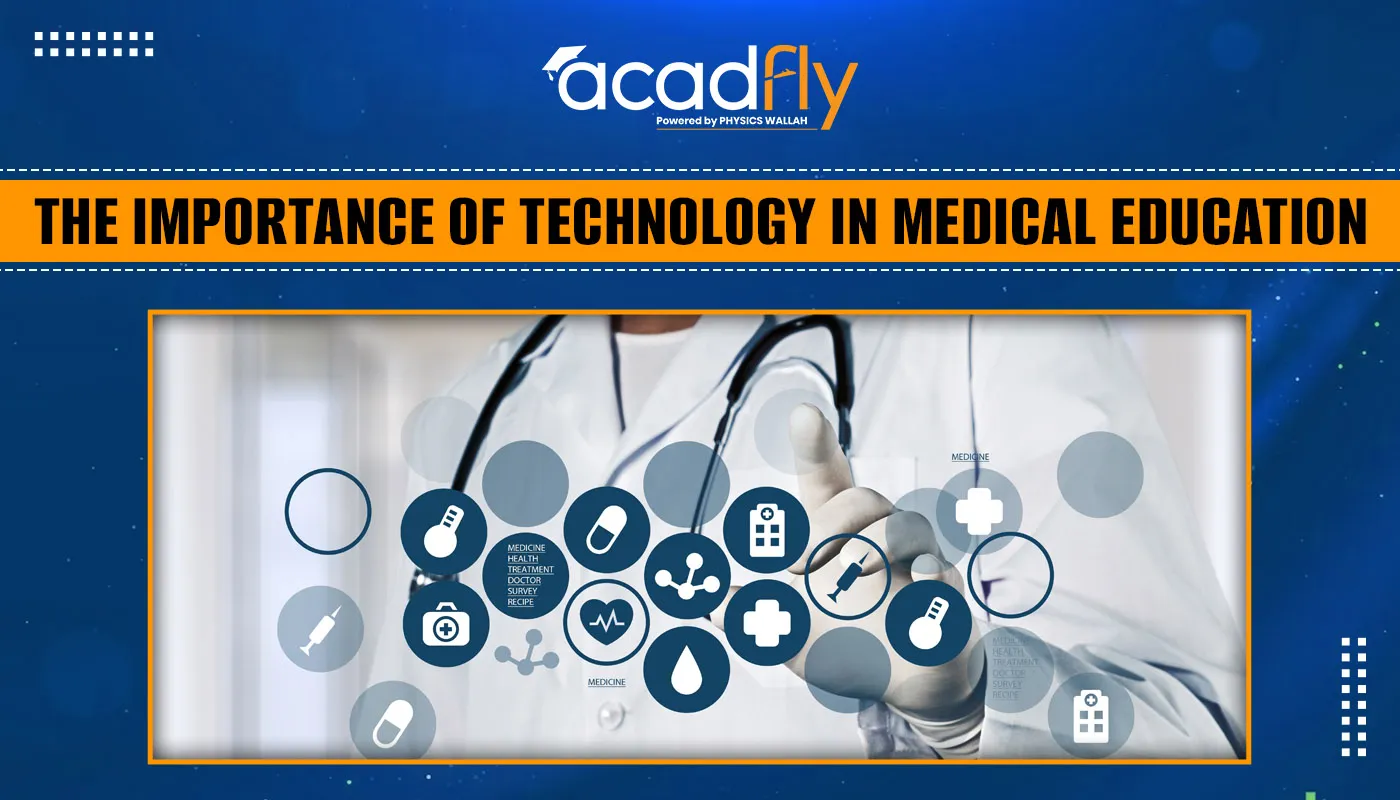


Importance of Technology in Medical Education: In the rapidly evolving field of medicine, the integration of technology in medical education has become indispensable. The importance of technology in medical education cannot be overstated as it enhances learning experiences, improves accessibility, and prepares students for the complexities of modern healthcare. This blog explores how technology is transforming medical education, supported by data from research and articles.
Impact of Technology on Medical Education
The integration of technology in medical education enhances learning experiences, improves accessibility, and facilitates collaborative and personalized learning. Advanced tools like VR, AR, and online platforms provide immersive and flexible educational environments, preparing students for modern healthcare challenges and improving their practical skills and theoretical knowledge
|
Impact of Technology on Medical Education |
|||
|
Aspect of Medical Education |
Technology Used |
Impact |
Data Source |
|
Learning Experiences |
Virtual Reality (VR), Augmented Reality (AR), Simulation-based training |
Improved surgical performance by 230% with VR, 20% improvement in anatomical knowledge with AR |
Journal of Medical Internet Research, BMC Medical Education |
|
Accessibility |
Online platforms, E-learning resources, MOOCs |
80% of students prefer online resources for convenience and up-to-date information |
American Medical Association |
|
Collaborative Learning |
Discussion forums, Social media, Video conferencing |
Better problem-solving skills and higher retention rates |
Journal of Medical Education and Curricular Development |
|
Personalized Learning |
Adaptive learning technologies, AI-driven platforms |
Increased student engagement and improved academic outcomes |
Educause |
|
Bridging Theory and Practice |
Clinical decision support systems (CDSS), Electronic health records (EHR), Telemedicine platforms |
Better clinical decision-making skills, efficient patient management |
Health Affairs |
|
Lifelong Learning |
Online resources, Mobile applications |
76% of physicians use online resources to stay updated |
Medscape |
The importance of technology in medical education is evident in the way it enhances learning experiences. Advanced technologies such as virtual reality (VR), augmented reality (AR), and simulation-based training provide students with immersive learning environments.
These tools enable medical students to practice procedures and surgeries in a risk-free setting, enhancing their practical skills without jeopardizing patient safety. According to a study published in the Journal of Medical Internet Research, VR training improved surgical performance by 230% compared to traditional methods.
Furthermore, AR applications overlay digital information onto the real world, allowing students to visualize anatomical structures and understand complex concepts more clearly. A research article in BMC Medical Education highlights that students using AR tools showed a 20% improvement in their anatomical knowledge compared to those using traditional methods.
The importance of technology in medical education extends to improving accessibility. Online platforms and digital resources have made medical education more accessible to students worldwide. E-learning platforms offer a plethora of resources, including video lectures, interactive modules, and online textbooks, which can be accessed anytime and anywhere. This flexibility is particularly beneficial for students in remote areas who may not have access to physical medical schools.
A study by the American Medical Association found that 80% of medical students preferred online resources over traditional textbooks due to the convenience and up-to-date information they provide. Additionally, Massive Open Online Courses (MOOCs) offered by institutions like Harvard and Stanford provide high-quality medical education to a global audience, further democratizing access to medical knowledge.
Collaborative learning is another area where the importance of technology in medical education is profound. Online collaboration tools and platforms such as discussion forums, social media, and video conferencing allow students and professionals to share knowledge, discuss cases, and collaborate on research projects. These tools foster a global community of learners and practitioners who can learn from each other’s experiences and expertise.
Research from the Journal of Medical Education and Curricular Development indicates that students engaged in online collaborative learning environments exhibited better problem-solving skills and higher retention rates compared to those in traditional classroom settings. These platforms also enable interprofessional education, where students from different healthcare disciplines can learn to work together, reflecting the collaborative nature of modern healthcare.
The importance of technology in medical education is also evident in its ability to facilitate personalized learning. Adaptive learning technologies use artificial intelligence to tailor educational content to individual students' needs. These systems analyze a student’s performance and learning style to provide customized resources and assessments, ensuring that each student can learn at their own pace and focus on areas where they need improvement.
A report by Educause highlights that personalized learning platforms can increase student engagement and improve academic outcomes by providing tailored feedback and support. For example, platforms like Osmosis and Lecturio offer personalized learning paths for medical students, helping them prepare more effectively for exams like the USMLE and NEET.
Technology also plays a crucial role in bridging the gap between theory and practice in medical education. Clinical decision support systems (CDSS), electronic health records (EHR), and telemedicine platforms are integral parts of modern healthcare, and familiarity with these technologies is essential for future healthcare professionals. Medical schools are incorporating these tools into their curricula to ensure that students are well-versed in their use by the time they enter the workforce.
A study published in Health Affairs found that medical students who trained with EHR systems demonstrated better clinical decision-making skills and were more efficient in patient management. Additionally, telemedicine training is becoming increasingly important, especially in the context of the COVID-19 pandemic, which has accelerated the adoption of remote healthcare services.
The importance of technology in medical education extends beyond initial training to support lifelong learning for healthcare professionals. Continuous professional development is crucial in the medical field, where new treatments, technologies, and research findings are constantly emerging. Online platforms and mobile applications provide healthcare professionals with easy access to the latest research, guidelines, and continuing medical education (CME) courses.
According to a survey by Medscape, 76% of physicians use online resources and mobile apps to stay updated with medical advancements. Platforms like UpToDate and Medscape offer comprehensive, evidence-based resources that healthcare professionals can use to enhance their knowledge and improve patient care.
The importance of technology in medical education is multifaceted, encompassing enhanced learning experiences, improved accessibility, collaborative learning, personalized education, practical training, and lifelong learning. These technological advancements are reshaping medical education, preparing students for the complexities of modern healthcare and ensuring they can provide the highest standard of care to their patients.
For students aspiring to excel in the medical field, leveraging these technological tools is essential. Platforms like AcadFly provide valuable resources and guidance, helping students navigate their educational journey and achieve their career goals. By embracing technology, medical students and professionals can stay at the forefront of medical education and practice, ultimately improving healthcare outcomes worldwide.
